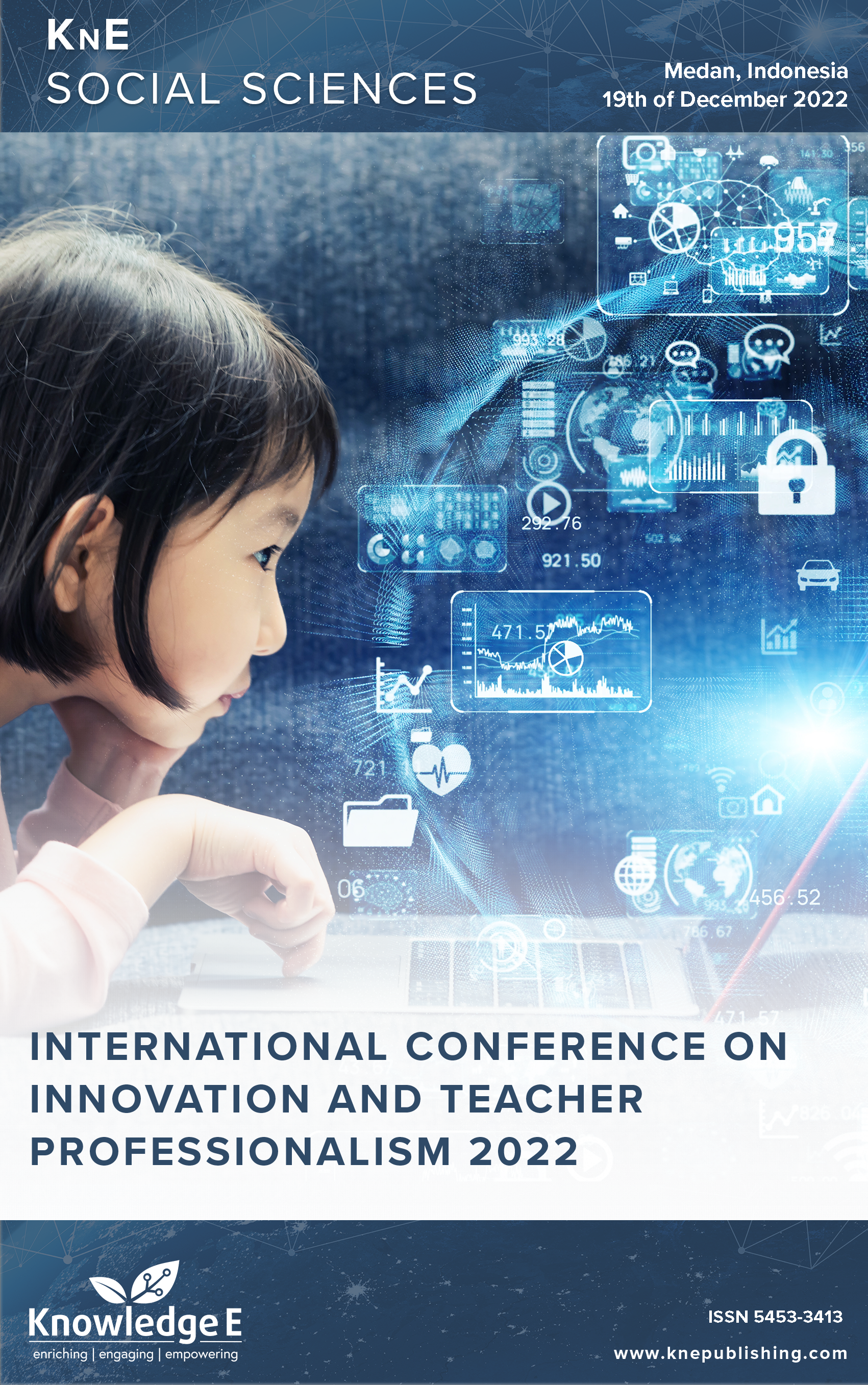Technology-based Learning and 21st-Century Skills for Primary School Students
DOI:
https://doi.org/10.18502/kss.v8i10.13451Abstract
The 21st-century skills must be presented in the learning process in the digital era for all students, including elementary school students. Various kinds of 21st-century learning content must be integrated into the learning process in the classroom according to the material contained in the independent curriculum. This study aims to analyze technology-based learning and 21st-century skills in elementary school students. Observations of the learning process were carried out on 41 students at SD N 1 Jarum and 143 students at SD IT Persada Bayat within 2 semesters. Students were interviewed in groups and some of them were interviewed individually to get some more specific information. Document analysis was carried out to see various supporting information that can complement the data. The results showed that technology-based learning and 21st-century skills in elementary school students can be applied using critical thinking, problem solving, communication, and collaboration. Various activities can be carried out to support the achievement of this model, including individual activities, small group activities, large groups, in the classroom, outside the classroom, idea-based, product-based, and digital-based activities. This model will be effective if all activities are carried out in a synergistic pattern.
Keywords: learning technology, 21
References
worldpopulationreview.com.
http://kurikulum.kemdikbud.go.id/
Kabanda MN. ”Globalization and curriculum in the 21???? Century: A. Case for Flexible and Dynamic Curriculum”. Asian J Interdisciplinary Res. 2021;4(3):18-29. doi: https://doi.org/10.34256/ajir2132.
Emaliana I. ”Teacher-centered or student-centered learning approach to promote learning?”. Jurnal Sosial Humaniora. 2017;10(2):59-70. doi: http://dx.doi.org/10.12962/j24433527.v10i2.2161.
Lak M, Soleimani H, Parvaneh F. ”The effect of teacher-centeredness method vs. learner-centeredness method on reading comprehension among Iranian EFL learners.” J Adv Engl Lang Teach. 2017;5(1):1-10.
Nurjannah I, Husniyah F, Harjanto T. ”Teacher-centered learning and studentcentered learning approaches in nursing school: Which one is better?” Belitung Nursing J. 2017;3(2):65-72. doi: https://doi.org/10.33546/bnj.59.
Keller LS. ”Teachers’ roles and identities in student-centered classrooms”. Int J STEM Educ. 2018;5(34):1-20. doi: 10.1186/s40594-018-0131-6.
Xhomara N. ”The effect of student-centered teaching and problem based learning on academic achievement in science.” J Turk Sci Educ. 2020;17(2):180-199. doi: 10.36681/tused.2020.20.
Boyaci Z, Sahin S, Hasirci HME, Kilic A. ”Student-centered education scale: A validity and reliability study”. Eur J Educ Res. 2017;6(1):93-103. 10.12973/EU-jer.6.1.93.
Rini WA. ” Pembelajaran dengan Pendekatan Student Centered Learning (SCL) pada Sekolah Minggu”. Jurnal Shanan. 2019;3(1):85-96. doi: https://doi.org/10.33541/shanan.v3i1.1575 .
Satriani FB, Sutiyarti U, Wahyuningsih R. ”Analisis Metode Pembelajaran 4C dalam Pembelajaran Daring Bahasa Jepang Kelas X Bahasa SMAN 1 Batu”. Jurnal Pendidikan Bahasa Jepang. 2022;8(1):45-56. doi: https://doi.org/10.23887/jpbj.v8i1.
Changwong K, Sukkamart A, Sisan B. ”Critical thinking skill development: Analysis of a new learning management model for Thai High Schools”. J Int Studies. 2018;11(2):37-48. doi: 10.14254/2071- 8330.
Erdogan V. ”Integrating 4C skills of 21st Century into 4 Language Skills in EFL Classes.” Int J Educ Res. 2019;7(11):113-124.
Yu TX, Mohammad WMRW. ”Integration of 21st Century Learning Skills (4C Elements) in interventions to improve english writing skill among 3K class students”. Int J Contemporary Educ. 2019;2(2):100-121. doi: doi.org/10.11114/ijce.v2i24498.oi.org.
Nawawi M, Laili M, Christanti A. ”Analysis of Students’4C Skills Based on the Pedagogy Multiliteracies Model”. Jurnal Scientia. 2022;10(2):233-241. doi: doi.org/10.35337/scientia.
Uliyandari M, Candrawati E, Herawati AA, Latipah N. ”Problem-based learning to improve concept understanding and critical thinking ability of science education undergraduate students”. IJORER: Int J Recent Educ Res. 2021;2(1):65-72. doi: doi.org/10.46245/ijorer.v2i1.56.
Guo P, Saab N, Post LS, Admiraal W. ”A review of project-based learning in higher education: Student outcomes and measures.” Int J Educ Res. 2020;102:1-13. doi: doi.org/10.1016/j.ijer.2020.101586.
Silalahi TF, Hutauruk AF. ” The application of cooperative learning model during online learning in the pandemic period”. Budapest Int Res Critics Institute-BIRCI J. 2020;3(3):1683- 1691. doi: doi.org/10.33258/birciv3i3.1100.
Williams G, Clement J. ”Identifying multiple levels of discussion-based teaching strategies for constructing scientific models.” Int J Sci Educ. 2015;37(1):82-107. doi: doi.org/10.1080/09500693.2014.966257.
Selwyn N, Eynon R, Potter J. ”A decade of learning media and technology: Looking back and looking forward”. Learning, Media and Technology. 42(2):127-129. doi: doi.org/10.1080/17439884.2017.1324483.
Meier D. The accelerated learning hand book. Bandung: Kaifa; 2002.
Lange C, Costley J. ”Improving online video lectures: Learning challenges created by media”. Int J Educ High Educ. 2020;17(16):1-18. doi: doi.org/10.1186/s41239-020- 00190-6.
Alfageh D, Alkarzon A. ”Elementary teacher perceptions about chromebook technology use in the classroom”. Int J Arts Human Soc Sci Stud. 2020;5(6):9-17.
Markula A, Aksela M. ”The key characteristics of project-based learning: How teachers implement project in K-12 science education”. Disciplinary and Interdisciplinary Science Education Research. 2022;4(2):1-17. doi: doi.org/10.1186/s43031-021-00042- x,
Watson SB. ”The essential elements of cooperative learning”. Am Biol Teach. 1992;54(2):84-86. doi. doi.org/10.2307/4449413

